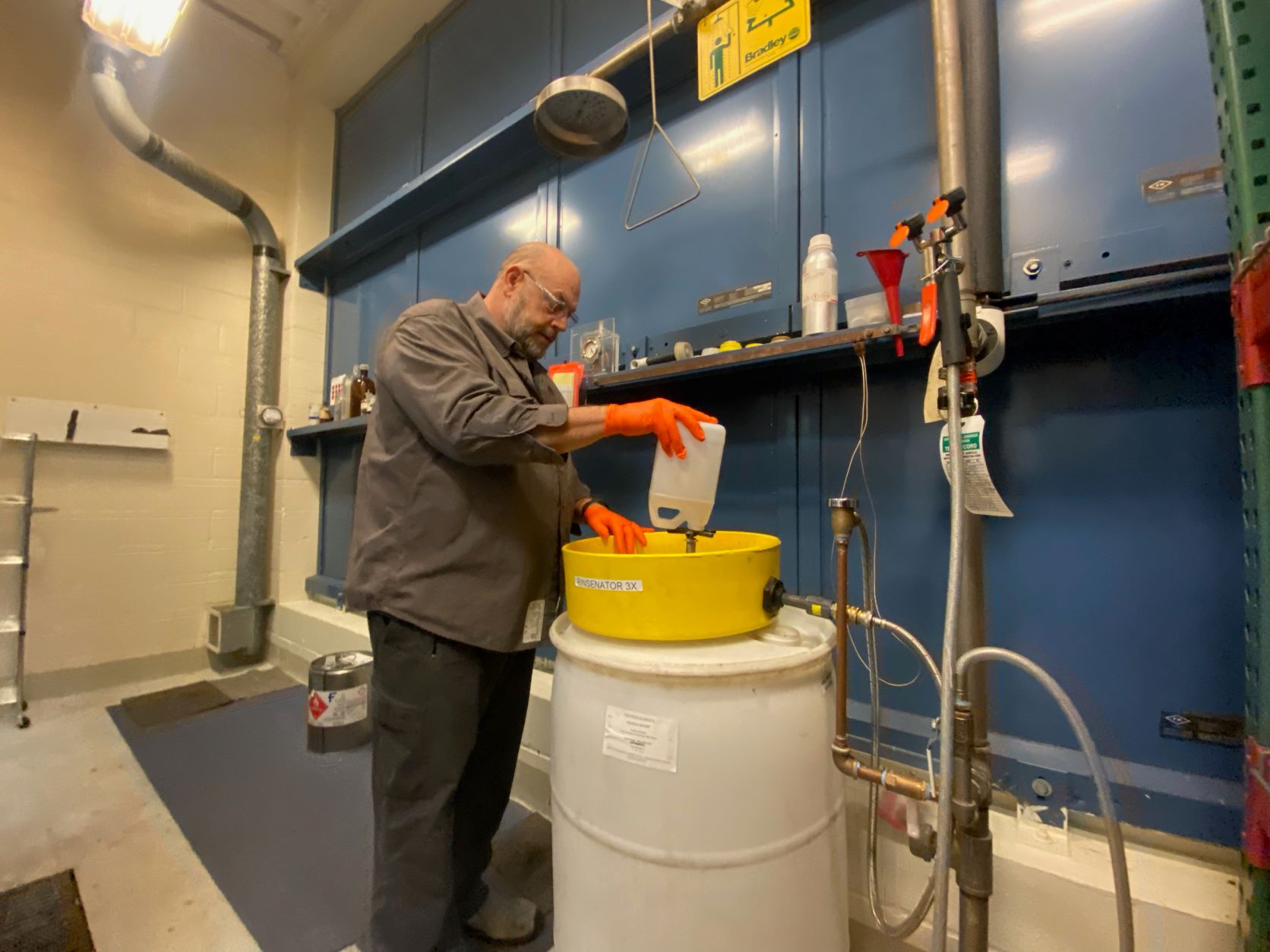An unannounced hazardous waste inspection from Oregon’s Department of Environmental Quality would strike fear into the hearts of many, but for the dedicated staff of Environmental Health and Safety, it was just another day keeping Oregon State University’s environment safer and healthier for students, staff and the community.
And, in true Beaver Nation fashion, OSU and EH&S sailed through the inspection – with zero violations or warnings. The Oregon DEQ commended OSU’s hazardous waste management system and called it “an excellent example to share with other institutions for higher education in Oregon,” according to the inspection report.
At OSU, safe management of hazardous waste is overseen by EH&S, a key player in campus operations and part of the Division of Finance and Administration. EH&S plays a critical role in ensuring a safe environment for the OSU community on the Corvallis campus and across Oregon.
An R-1 university like OSU generates a large amount of hazardous waste. From lab activities to science classes to the typical building and landscape maintenance services, managing the vast stream of waste determined to be hazardous is a full-time job involving multiple staff positions.

Waste is considered hazardous if, according to the DEQ, it “can create conditions that threaten public health and the environment,” without adequate protections and safeguards. Hazardous waste refers to a variety of substances such as chemicals or other materials used in labs, or pesticides used by Facilities Services to manage campus landscapes.
Machelle Bamberger, Pete Lepre and Pete Schoonover from EH&S manage the Hazardous Waste and Universal Waste Programs for OSU. Over the years, they have developed custom-built solutions for managing specific aspects of hazardous waste management. Their innovative solutions were recognized by the DEQ, and as hazardous waste safety officer Bamberger would say, they are all due to the team’s creativity.

Take, for example, the “Rinsinator.” Schoonover, a hazardous waste specialist, designed this method to reuse containers dedicated to transporting chemicals, such as bulk solvents. Many facilities simply dispose of the containers, but with the containers costing around $25 each, Schoonover knew he could do better. Taking a page from glass rinsers in the hospitality industry, Schoonover devised a simple rinsing station using about $80 worth of parts. The “Rinsinator” cleans the inside of the containers, capturing the rinse water to later be disposed in a safe manner, and leaving the containers ready for the new batch of solvent or pesticides.
Another innovation comes straight from the grocery store. Containers of hazardous waste must be dated and marked for easy tracking and close attention must be paid to the date of accumulation. Schoonover had no problem with this challenge; a modified grocery store price sticker gun makes labeling and dating hazardous materials a snap.
“The regulators loved it,” explained Schoonover.
Along with Schoonover’s solutions, Bamberger has initiated innovative programs designed to save OSU money and to stretch its resources even further. The Chemical Reuse Program, started in 2018, has diverted unopened chemicals from labs on the Corvallis campus. Instead of the chemicals sitting on a shelf unused, or being disposed of, these unused chemicals are donated to other labs at OSU that need them. In 2021 alone, the Chemical Reuse Program saved the university around $34,400 in chemical purchases.
“I want to make researchers more successful,” said Bamberger. “That’s our job!”





